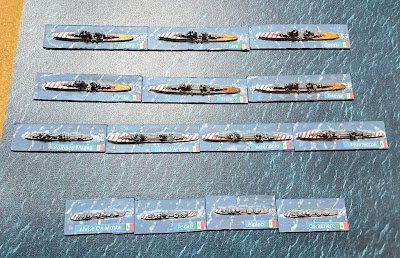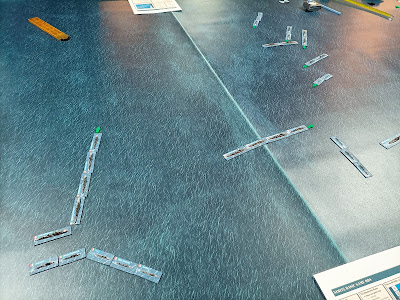The next game in our fictional 2nd Polish Succession War features a battle between the combined Saxon and Polish-Lithuanian Commonwealth forces against the Russians. We used the Seven Years rules, created by Michael.
SCENARIO: Bartek Żynda
UMPIRING: Michael Schneider, Bartek Żynda
SCENERY: Michael Schneider, Bartek Żynda, SESWC
FIGURES & MODELS: Michael Schneider, Bartek Żynda
1. Forces.
SAXONY & POLISH-LITHUANIAN COMMONWEALTH
(Alasdair, Bartek, Gordon, Peter)
Saxon Division
1st Infantry Brigade
3 x Grenadiers (Elite)
1 x Light Gun
2nd Infantry Brigade
3 x Musketeers (Large)
1 x Light Gun
3rd Infantry Brigade
3 x Musketeers (Large)
1 x Light Gun
Cavalry Brigade
2 x Uhlans
Gun Battery
3 x Medium Guns
Polish-Lithuanian Division
1st Brigade
2 x Levy of Nobles Cavalry (Poor)
1 x Skirmishers
2nd Brigade
2 x Levy of Nobles Cavalry (Poor)
1 x Skirmishers
RUSSIA
(Michael, Mike, Tim)
1st Infantry Brigade
1 x Grenadiers (Elite)
3 x Musketeers
1 x Howitzer
2nd Infantry Brigade
3 x Musketeers
1 x Howitzer
3rd Infantry Brigade
3 x Musketeers
1 x Howitzer
1st Cavalry Brigade
1 x Cuirasiers
1 x Dragoons
1 x Skirmishers
2nd Cavalry Brigade
1 x Dragoons
1 x hussars
1 x Skirmishers
1st Gun Battery
2 x Medium Gun
2nd Gun Battery
2 x Medium Gun
2. Introduction.
In an alternative version of the events of 1764 in the Polish-Lithuanian Commonwealth, the Second War of the Polish Succession took place. In this reality, Frederick Augustus received support from Austria and France to fight for the Polish crown, while Russia wanted Stanisław August Poniatowski, who was dependent on it, on the throne. This led to a war between Saxony and Russia. Saxony was backed by Austria and Russia was supported by Prussia under a secret special article of the Russo-Prussian Convention of April 11, 1764, which stipulated that Prussia would provide military assistance to Russia if any European power supported Poniatowski's opponent militarily. The Republican party, also known as the Hetman's party, supported the Saxon candidate, who aimed to maintain existing rights and privileges. On the other hand, Poniatowski was supported by the Familia, who wanted to carry out reforms to strengthen the country. They believed that with the help of Catherine the Great, who was considered an enlightened person, they would be able to bring about the desired change in the country that was in line with the spirit of the era.
3. The game.
The Second War of the Polish Succession is in full swing. After defeating the Russians and Prussians at Szuwarkowoszczewice, the Saxons advance deeper into Lesser Poland towards Krakow. Near the village of Psiekiszki, they are to meet a delegation of Polish nobility and go together towards the former capital of Poland. They do not know that a strong Russian group, which was not defeated during the previous battle, is heading in the same direction. The Russians want to prevent the Saxon-Polish forces from joining together and marching on Kraków at all costs. To do this, the bridge over the nearby river must be burned.





The Russians were the first to arrive at the battlefield and spotted Polish nobles. The nobles sent their riflemen to capture the village of Psiekiszki and a nearby mountain, which stopped the movement of the Russian cavalry. The cavalry did not dare to charge the troops of the Polish nobility, who stood at a distance. Meanwhile, Saxon troops started to arrive. However, they were in marching columns when they faced the enemy, which proved to be a disadvantage. The Russian cavalry attacked them and destroyed one of the musketeer units.
During the battle, the Saxon Uhlans made a charge against the Russian cuirassiers. However, this turned out to be a grave mistake as the Uhlans were forced to retreat. This retreat created a convenient break for the Russian guns to fire upon the Saxon infantry, who were still in marching columns and vulnerable to attack. As a result, the Saxons suffered huge losses and another musketeer unit was destroyed.






Despite facing setbacks, the Saxons were able to join forces with the Polish nobles. They reorganized their troops and opened fire on the Russian infantry. The Saxon battery of medium guns inflicted significant damage on Catherine the Great's army. In fact, after just three salvos, the entire Russian brigade was destroyed! Alasdair was fortunate enough to roll three double sixes on the dice, thereby dealing a severe blow to the Russians. It was clear that the Saxons had gained the upper hand and the Russians were unable to stop them. Thus, the battle was lost by the Russians. The Saxons will now head to Krakow, where they will await the arrival of the Austrian contingent. This Austrian force will need to break through the blockade of the Prussian corps, but that is a story for another time.
4. Links.
SESWC:
https://www.facebook.com/Seswc.co.uk/posts/812953810861952
FLICKR:
https://www.flickr.com/photos/asienieboje/albums/72177720315731127





























































